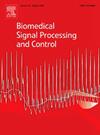Discrimination of invasive ductal and lobular carcinoma of the breast based on the combination of enhanced Legendre polynomial, kinetic features and deep learning features
IF 4.9
2区 医学
Q1 ENGINEERING, BIOMEDICAL
引用次数: 0
Abstract
The fifth most common cause of cancer-related deaths among women worldwide is breast cancer, which is the most common cancer among women globally. Early detection of breast cancer through regular screenings and awareness of symptoms can lead to better prognosis and more effective treatment options. Breast cancer is a diverse disease that comes in more than 20 varieties. It is generally divided into two categories based on histology: in-situ carcinoma and invasive (infiltrating) carcinoma. These categories are further divided into four subcategories based on the location of the tumor’s origin: invasive ductal carcinoma (IDC), invasive lobular carcinoma (ILC), lobular carcinoma in situ (LCIS), and ductal carcinoma in situ (DCIS). The aim of this study is to use medical image processing and machine learning to accurately diagnose invasive lobular carcinoma (ILC) and invasive and lobular carcinoma (IDC) of the breast. This study develops a novel hybrid feature extraction model to improve the diagnosis accuracy of breast cancer. Deep learning, kinetic, and enhanced Legendre polynomial features have been combined to create a hybrid feature model that enhances IDC and ILC discrimination. The proposed model consists of four stages: data collection, preprocessing, feature extraction, and classification. The publicly available DCE-MRI dataset was used in this study, and the results showed classification accuracy of 97.99% in combined post-contrast-1 model. Overall, the results demonstrated the benefits of the hybrid feature extraction model and the fact that this study is non-invasive, uses only medical image processing, and does not require biopsies to enhance treatments.
求助全文
约1分钟内获得全文
求助全文
来源期刊

Biomedical Signal Processing and Control
工程技术-工程:生物医学
CiteScore
9.80
自引率
13.70%
发文量
822
审稿时长
4 months
期刊介绍:
Biomedical Signal Processing and Control aims to provide a cross-disciplinary international forum for the interchange of information on research in the measurement and analysis of signals and images in clinical medicine and the biological sciences. Emphasis is placed on contributions dealing with the practical, applications-led research on the use of methods and devices in clinical diagnosis, patient monitoring and management.
Biomedical Signal Processing and Control reflects the main areas in which these methods are being used and developed at the interface of both engineering and clinical science. The scope of the journal is defined to include relevant review papers, technical notes, short communications and letters. Tutorial papers and special issues will also be published.
 求助内容:
求助内容: 应助结果提醒方式:
应助结果提醒方式:


